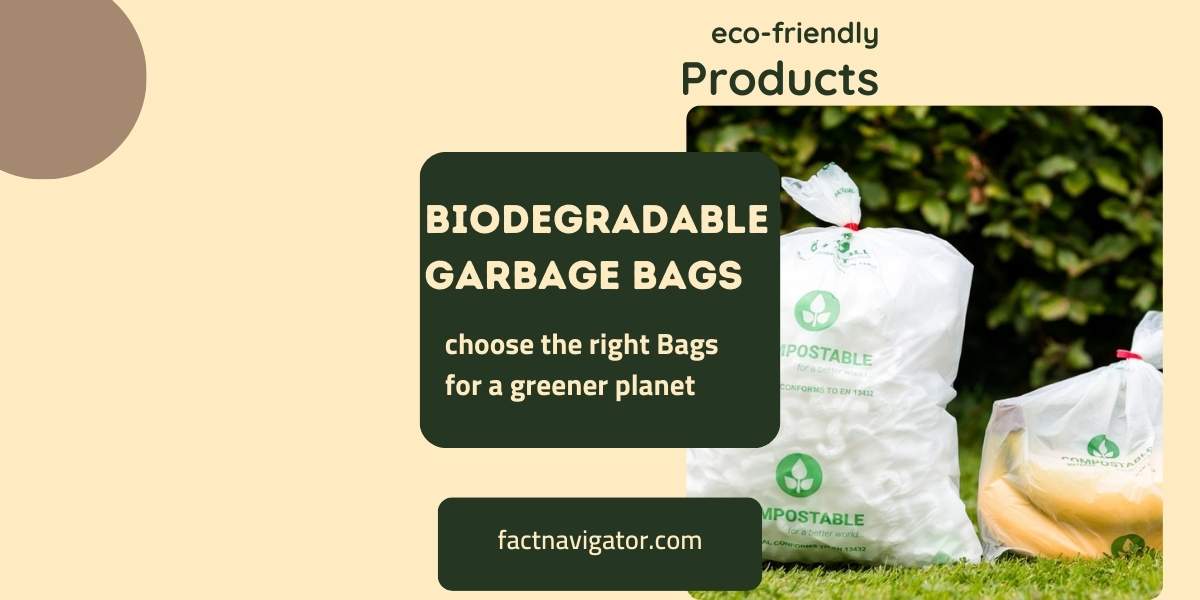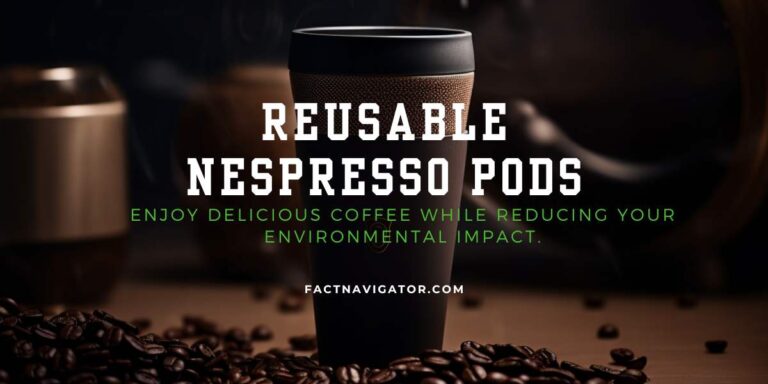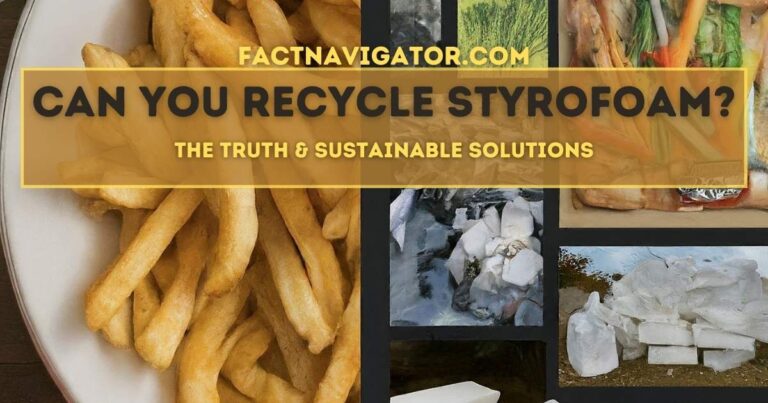The Ultimate Guide to Biodegradable Garbage Bags (2024)

1. The Problem with Traditional Plastic Garbage Bags
Traditional plastic garbage and dustbin bags, while seemingly innocuous, contribute significantly to a multitude of environmental and health concerns. Understanding these issues is crucial to making informed choices about waste disposal and embracing sustainable alternatives like biodegradable garbage bags.
1.1 Environmental Impact: Landfills, Pollution, and the Plastic Crisis
The sheer volume of plastic bags used globally paints a grim picture. Every year, an estimated 1 trillion plastic bags are consumed worldwide, with a significant portion ending up in landfills. Unfortunately, traditional plastic can take hundreds of years to decompose, creating mountains of waste that take up valuable space and leach harmful chemicals into the environment.
The issue doesn’t stop there. When plastic bags break down, they fragment into microplastics, tiny particles less than 5 millimeters in size. These microplastics enter our waterways, polluting oceans and infiltrating the food chain, posing a threat to marine life and potentially even human health. This widespread plastic pollution has become a global crisis, impacting ecosystems and jeopardizing the health of our planet.
1.2 Health Concerns: Microplastics and Potential Health Risks
As mentioned earlier, plastic bags degrade into microplastics, raising concerns about potential health risks. These tiny particles can be ingested by marine animals, entering the food chain and potentially ending up on our plates. Studies are underway to understand the full impact of microplastics on human health, but potential concerns include:
- Disruption of the endocrine system: Microplastics may mimic hormones, potentially interfering with normal bodily functions.
- Inflammation and cell damage: Studies suggest microplastics might trigger inflammatory responses and even damage cells.
- Increased risk of chronic diseases: Some research points towards a link between microplastic exposure and certain chronic diseases.
While conclusive evidence is still emerging, the potential health risks associated with microplastics highlight the need for responsible waste management and alternatives like biodegradable garbage bags.
1.3 Limited Recycling Options: Not All Plastics are Created Equal
Most people assume plastic bags are recyclable. However, the reality is more complex. Traditional plastic bags often belong to a category with limited recycling infrastructure or low recycling rates. Additionally, contamination by food waste or other materials can further hinder the recycling process.
Even when recycling is possible, it’s not a perfect solution. The recycling process itself consumes energy and resources, and recycled plastic doesn’t offer the same quality or versatility as virgin plastic. Ultimately, reducing our reliance on plastic altogether, especially for single-use applications like garbage bags, is crucial for a more sustainable future.
By understanding the environmental and health concerns associated with traditional plastic bags, we can make informed choices towards responsible waste disposal and embrace sustainable alternatives like biodegradable garbage and dustbin bags. These environmentally friendly options offer a glimmer of hope in our fight against the global plastic crisis.
2. Biodegradable Garbage Bags: A Sustainable Solution (but Not a Silver Bullet)
The mounting pressure of plastic pollution demands solutions, and biodegradable garbage bags have emerged as a promising alternative. But before ditching your traditional plastic bin liners, let’s delve into the science behind these eco-friendly options and weigh their true potential.
2.1 What are Biodegradable Garbage Bags?
Biodegradable garbage bags are crafted from organic materials like plant-based starches, cellulose, or bioplastics derived from corn or sugarcane. Unlike traditional plastic, these materials can be broken down by microorganisms under the right conditions, leaving behind water, CO2, and biomass.
2.1.1 Types of biodegradable materials:
- Plant-based starches: These readily decompose in industrial composting facilities, offering a quicker breakdown than traditional plastic.
- Cellulose: Derived from wood pulp or other organic sources, cellulose breaks down slowly but can enrich soil when composted properly.
- Bioplastics: These innovative materials use renewable resources like plant oils to create plastic-like polymers that biodegrade under specific conditions.
2.1.2 Breakdown process and composting:
Biodegradable bags require specific environments for effective breakdown. Industrial composting facilities provide optimal conditions for most commonly available types, breaking them down within months to years. Home composting may be possible for some varieties, but proper temperature and moisture levels are crucial for successful decomposition.
2.2 Benefits of Biodegradable Bags
Switching to biodegradable options offers several compelling advantages:
- Reduced environmental impact: Unlike traditional plastic, biodegradable bags don’t clog landfills or contribute to microplastic pollution in our oceans. Their decomposition, while not emission-free, releases significantly less greenhouse gas compared to traditional plastic breakdown.
- Lower health risks: By avoiding the potential health concerns associated with microplastics and the chemicals used in traditional plastic production, biodegradable bags offer a potentially safer alternative.
- Potential for soil enrichment: When composted correctly, some biodegradable bags can transform into nutrient-rich compost, improving soil health and promoting plant growth. This creates a valuable closed-loop system for organic waste management.
2.3 Limitations of Biodegradable Bags
While promising, biodegradable bags aren’t a perfect solution and come with their own set of challenges:
- Availability and cost: Currently, biodegradable bags are often less readily available and more expensive than traditional plastic counterparts. However, as demand grows and production scales up, accessibility and affordability are expected to improve.
- Composting facility requirements and accessibility: Not all regions have access to industrial composting facilities equipped to handle biodegradable bags. Home composting might be an option for certain types, but requires knowledge and specific conditions.
- Durability and leak-proof concerns: Some biodegradable bags might not offer the same level of durability and leak-proof protection as traditional plastic, especially at lower price points. Researching reputable brands and choosing bags suitable for your specific needs is crucial.
Biodegradable garbage bags represent a significant step towards more sustainable waste management. However, it’s important to understand their limitations and choose them based on individual needs and available composting infrastructure.
Remember, reducing waste at the source remains the most impactful solution. Consider reusable alternatives for non-organic waste, and when using biodegradable bags, ensure proper disposal within appropriate composting facilities. Together, we can move towards a cleaner future, one bin liner at a time.
3. Choosing the Right Biodegradable Garbage Bags: Navigate the Eco-Friendly Aisle Like a Pro
With the growing awareness of plastic pollution, many of us are switching to biodegradable garbage bags to minimize our environmental impact. But amidst a diverse selection, choosing the right one can feel overwhelming. Fear not, eco-conscious warriors! This guide equips you with the knowledge to navigate the aisle like a pro and select biodegradable dustbin bags that perfectly suit your needs.
3.1 Material Considerations: Understanding Different Bioplastics
Not all “biodegradable” is created equal. Here’s a breakdown of common bioplastic types:
- Plant-based starches: Often corn- or potato-based, these decompose readily in industrial composting facilities but might not be suitable for home composting.
- Cellulose: Derived from wood pulp, it breaks down slowly but enriches soil when composted properly. Look for certifications like DIN CERTCO for guaranteed biodegradability.
- Bioplastics (PHA, PLA): These innovative materials utilize renewable resources like plant oils to create plastic-like polymers. Their biodegradation properties vary depending on the specific type and composting conditions. Look for certifications like ASTM D6400 for industrial composting compatibility.
Remember, while some bioplastics might be compostable at home, industrial facilities usually offer optimal breakdown conditions. Check your local options before choosing home-compostable varieties.
3.2 Certifications and Standards: BPI, ASTM, and Others
Navigating the label maze can be confusing. Here are some key certifications to look for:
- BPI (Biodegradable Products Institute): This US-based certification ensures the bag breaks down completely in industrial composting facilities and meets specific safety standards.
- ASTM D6400: This international standard certifies industrial compostability under specific conditions. Look for additional information on the specific composting environment required.
- DIN CERTCO: This European certification guarantees biodegradability under industrial composting conditions.
- OK Compost Home: This European certification signifies home compostability, but double-check for specific composting requirements.
These certifications offer independent verification of a bag’s biodegradability claims, helping you make informed choices.
3.3 Size and Thickness: Matching the Bag to Your Needs
Biodegradable bags come in various sizes, thicknesses, and styles. Consider your needs:
- Size: Opt for sizes that match your bin capacity. Avoid overstuffing, as it can hinder proper breakdown.
- Thickness: Thicker bags offer increased leak-proof protection but might take longer to decompose. Choose based on your waste type and composting facility requirements.
- Drawstring vs. Tie-top: Drawstring bags offer easy closure, while tie-top styles might be more cost-effective. Pick the one that suits your convenience.
Remember, mismatched size or thickness can impact leak-proof performance and composting efficiency.
3.4 Price and Availability: Finding the Best Value for Your Budget
Biodegradable bags might currently be priced slightly higher than traditional plastic. However, consider the long-term environmental benefits and potential cost savings through proper composting practices. Compare prices across brands and stores to find the best value for your budget. As demand grows, availability and affordability are expected to improve.
3.5 Additional Features: Leak-proof, Scented, etc.
Some biodegradable bags offer additional features like:
- Leak-proof design: Perfect for wet waste or food scraps.
- Scents: While convenient, ensure the scents are derived from natural ingredients and are compatible with your composting facility’s guidelines.
- Compostable liners: Ideal for smaller bins within larger ones, simplifying the composting process.
Remember, prioritize functionality and environmental impact over unnecessary features that might complicate composting.
Choosing the right biodegradable garbage bags empowers you to minimize your environmental footprint while maintaining convenience. Utilize this guide to make informed decisions, navigate the options confidently, and become a champion for a greener future, one bin liner at a time!
4. Beyond Biodegradable Garbage Bags: Minimizing Waste for a Greener Future
While biodegradable garbage bags offer a more sustainable alternative, they’re just one piece of the puzzle in reducing our environmental impact. To truly minimize waste and champion a greener future, we must adopt a holistic approach. Let’s explore strategies that go beyond the bin liner and empower you to become a waste warrior:
4.1 Reduce Consumption: Embrace Reusables and Composting
The most sustainable waste is the waste we never create. Here’s how:
- Embrace reusable alternatives: Invest in reusable shopping bags, cloth napkins, and food containers to significantly reduce your reliance on single-use items.
- Compost food scraps: Transform food waste into nutrient-rich compost for your garden instead of sending it to landfills. Explore home composting bins or community composting programs.
- Choose mindful packaging: Opt for products with minimal packaging or choose brands committed to sustainable packaging practices.
Remember, reducing consumption at the source is the most effective way to minimize waste and its associated environmental burden.
4.2 Recycle Right: Know What & How to Recycle Properly
Recycling plays a crucial role in resource conservation, but doing it right matters. Here’s how to ensure your efforts have maximum impact:
- Familiarize yourself with local recycling guidelines: Different municipalities have varying rules about what can and cannot be recycled. Visit your local waste management website or app to stay informed.
- Clean and sort your recyclables: Rinse containers, remove food residue, and sort items according to your local guidelines. Contamination can render an entire batch of recyclables unusable.
- Invest in a dedicated recycling bin: Having a separate bin for recyclables makes it easier to maintain proper sorting and avoid confusion.
- Educate others: Spread awareness about proper recycling practices within your family, community, and workplace. Together, we can maximize the effectiveness of our recycling efforts.
By understanding and following proper recycling practices, we can ensure valuable resources are recovered and reused, minimizing the need for virgin materials and their associated environmental footprint.
4.3 Support Sustainable Initiatives: Advocate for Change
Individual actions matter, but collective action has the power to drive systemic change:
- Support brands committed to sustainability: Choose products from companies that prioritize eco-friendly practices, including responsible sourcing, packaging, and waste management.
- Advocate for improved waste management: Contact your local representatives and voice your support for policies that promote composting, waste reduction, and extended producer responsibility.
- Join or donate to environmental organizations: Lend your voice or support to organizations working towards sustainable waste management solutions.
By supporting and advocating for sustainable initiatives, we can influence larger systems and contribute to building a more circular economy where waste is minimized and resources are valued.
Remember, every action, every choice, every voice has the power to make a difference. By embracing these strategies and going beyond just biodegradable garbage bags, we can collectively pave the way for a cleaner, greener future for ourselves and generations to come.
5. Conclusion: Making a Difference, One Bag (and Beyond) at a Time
Our journey through the world of biodegradable garbage bags has highlighted their potential as a more sustainable alternative to traditional plastic. However, they are just one step on the path toward a truly waste-conscious future. The real impact lies in our collective efforts to minimize waste at its source, embrace responsible disposal practices, and advocate for systemic change.
5.1 The Impact of Individual Choices
Every biodegradable garbage bag chosen over a traditional plastic counterpart represents a small victory for the environment. It signifies a conscious decision to reduce our reliance on harmful materials and contribute to a healthier planet. Multiply this conscious choice across millions of individuals, and the positive impact becomes undeniable.
But our power goes beyond just biodegradable dustbin bags. Opting for reusable alternatives, composting food scraps, and recycling diligently – these seemingly small actions collectively create a ripple effect. They inspire others, influence businesses, and ultimately drive change within our communities.
Remember, even seemingly insignificant choices have the power to spark transformation. By making informed decisions and adopting sustainable practices in our daily lives, we pave the way for a future where biodegradable garbage bags become not just an alternative, but the norm.
5.2 Encouraging Collective Action Towards a Greener Future
Individual action is crucial, but collective action holds the key to unlocking truly transformative change. We can amplify our impact by:
- Spreading awareness: Talking to our families, friends, and neighbors about sustainable practices can inspire them to join the movement. Sharing information and resources empowers others to make informed choices.
- Supporting sustainable businesses: By choosing brands committed to responsible sourcing, packaging, and waste management, we send a powerful message to the market. Our purchasing power has the ability to shape the future of consumer goods.
- Advocating for change: Contacting local representatives, voicing our support for sustainable policies, and participating in relevant campaigns can influence decision-making at the governmental level.
Remember, a collective voice carries undeniable weight. By joining forces with others who share our vision for a greener future, we can create a groundswell of support for systemic change, pushing policy and industry towards more sustainable practices.
The journey towards a waste-conscious world starts with a single step, a single choice. By embracing biodegradable alternatives, minimizing waste at the source, and advocating for change, we can collectively write a new chapter – one where sustainability is not just an option, but a way of life.





